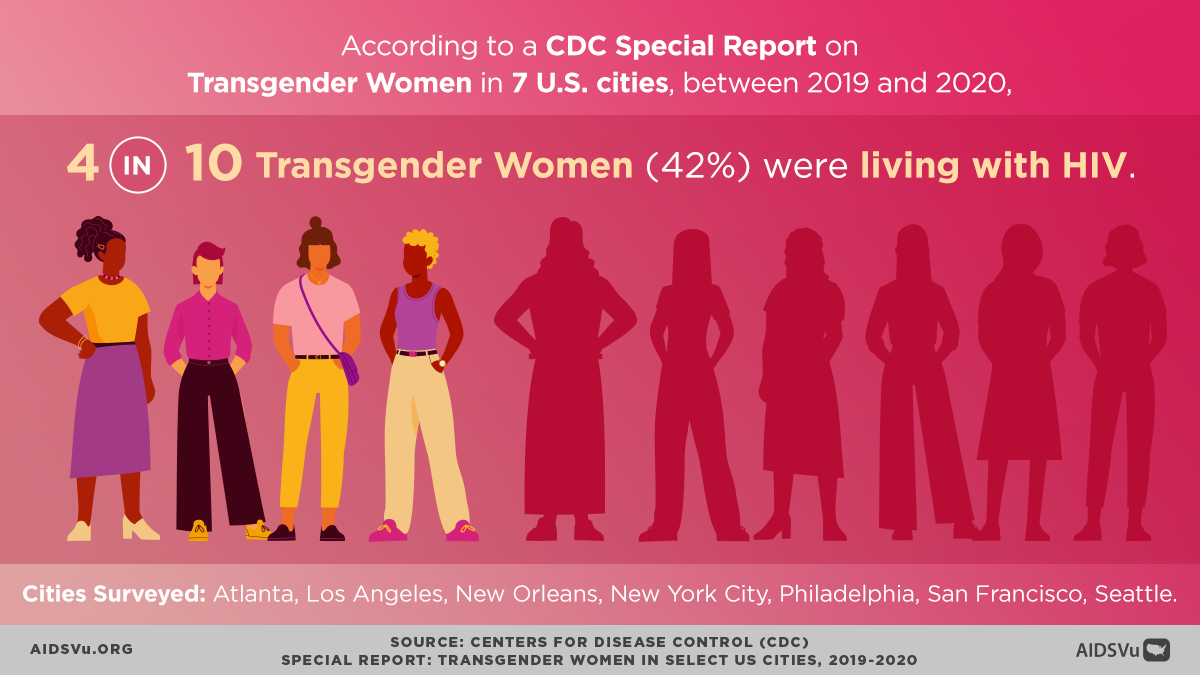PrEP Use by Sex and Gender

Prep
PrEP Use by Sex and Gender
Because HIV disproportionately impacts gay and bisexual men, women with HIV are often underrepresented in the HIV conversation, despite representing 23% of all people living with HIV in 2022. Women are also less likely to perceive themselves as at risk for HIV. They often do not receive HIV and prevention-related information from health care providers and their communities adequate to their risk.
- Among all PrEP users in the U.S., 92% were male and only 8% were female, despite the fact that women comprised 19% of new HIV diagnoses.
- Males have a PNR that is more than two times higher than the PNRs for females, demonstrating that males have a lower unmet need for PrEP.
Transgender Individuals and PrEP:
According to a 2021 CDC Special Report that analyzed HIV among transgender women in seven U.S. cities, between 2019 and 2020, high percentages of transgender women report a knowledge of PrEP, but far fewer report using PrEP.
The Special Report found the following when comparing PrEP knowledge compared to PrEP use among transgender women:
- Atlanta: knowledge 92% (use 23%)
- Los Angeles: 92% (27%)
- New Orleans: 92% (36%)
- New York City: 92% (43%)
- Philadelphia: 96% (34%)
- San Francisco: 95% (46%)
- Seattle: 82% (17%)
Transgender men and women face many challenges which impact their ability to seek, receive, and remain engaged in HIV care. In addition, there are many prevention challenges that impact the HIV health outcomes for some transgender people. These include racism/discrimination, stigma, transphobic discrimination, medical mistrust, unmet gender affirmation needs, and many more.
In addition to these challenges, the social determinants of health that can impact all individuals living with or at risk for HIV may be particularly acute. According to data from the Ryan White HIV/AIDS Program, which may not be representative of the entire U.S.
- In 2022, 73% of transgender women and 64% of transgender men living with HIV lived below the federal poverty level.
- In 2021, 27% of transgender individuals living with HIV were homeless or experienced unstable housing.
Black Women and HIV:
Black women continue to be disproportionately impacted by HIV, accounting for 54% of new HIV infections in U.S. women, despite making up less than 15% of the female population.
Among Black women, 91% of new HIV infections were attributed to heterosexual contact. The HIV infection rate among Black women was the highest compared to women of all other races and ethnicities.
Additionally, a recent CDC study found that Black transgender women accounted for 62% of HIV infections among transgender women with HIV living in seven major U.S. cities.
Black women are also underserved by prevention methods such as PrEP relative to their need. Among all PrEP users in the U.S. in 2021, 92% were male and only 8% were female, despite the fact that women comprised 18% of new HIV diagnoses.


